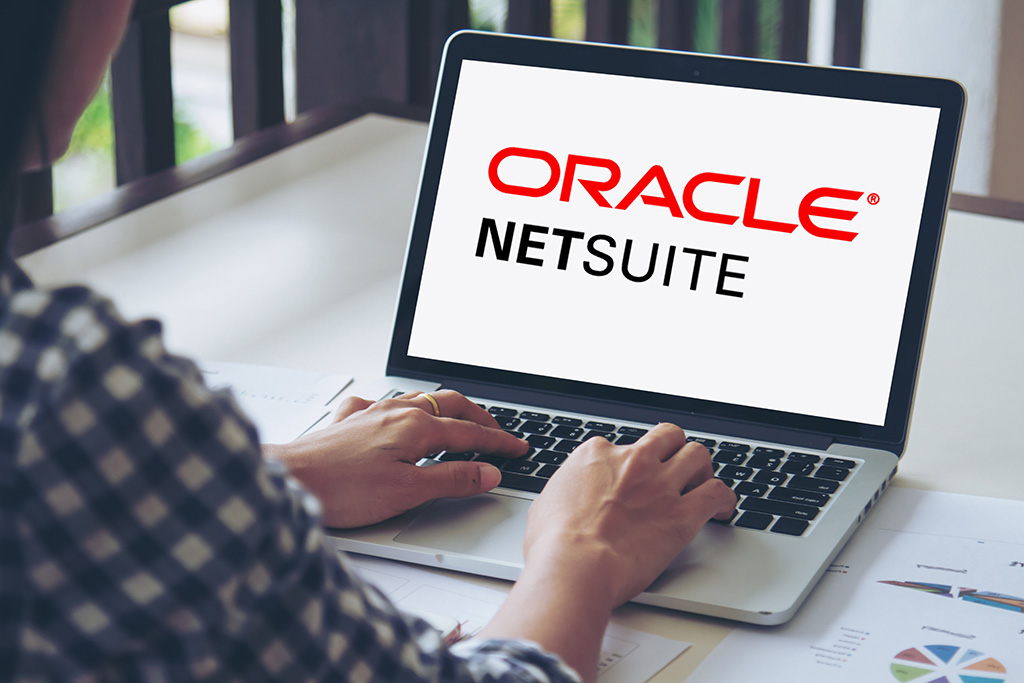What Is CRM ? Customer relationship management (CRM) has become an essential component of modern-day business practices, allowing companies to manage and nurture their relationships with customers. In today’s highly competitive market, understanding and catering to the needs of customers is crucial for economic success. CRM provides a comprehensive approach to areas of strength for building relationships and fostering loyalty while streamlining operations and increasing efficiency.
In this article, we will delve into the world of CRM, exploring its definition, core principles, and how it can benefit organizations of all sizes. By examining the key features and benefits of CRM, readers will gain a better understanding of how this powerful tool can help businesses achieve their goals and stay ahead in today’s rapidly evolving marketplace.
What is CRM and why organizations can’t easily overlook it?

In today’s highly competitive business environment, building and maintaining strong relationships with customers is crucial for long-term success. This is where customer relationship management (CRM) comes into play. CRM is not just a software solution; it’s a comprehensive approach that helps organizations effectively manage interactions with their customers and prospects.
At its core, CRM revolves around understanding and addressing the needs of customers to enhance their overall experience. It involves gathering and analyzing data about customers, their preferences, purchase history, and interactions with sales and support teams. By using this information, organizations can personalize their approach, anticipate needs, and provide excellent customer service.
Organizations cannot easily overlook CRM because it helps them to:
- Build stronger relationships with customers
- Increase customer loyalty and retention
- Improve customer satisfaction
- Boost sales and revenue
- Streamline business processes
- Gain a competitive advantage in the market
Overall, CRM is a powerful tool that enables organizations to better understand their customers and provide them with the best possible experience.
The Advancement of CRM

CRM has come a long way since its inception. Initially, it was a basic information management tool used to track customer contact data. However, as businesses recognized the importance of nurturing customer relationships, CRM evolved into a more sophisticated system that integrated various aspects of customer interactions.
Today’s CRM systems offer numerous features and functionalities that go beyond managing contact data. They enable businesses to track customer interactions across various channels such as calls, emails, social media, and website visits. This allows organizations to gain a holistic view of each customer, providing them with a comprehensive understanding of their journey. With the help of CRM, businesses can provide personalized experiences to their customers, resulting in increased customer satisfaction and loyalty.
Why CRM Matters for Organizations

In today’s highly competitive market, organizations must focus on providing exceptional customer experiences that cater to individual customer needs. With the help of Customer Relationship Management (CRM), companies can effectively manage their interactions with customers and build long-lasting relationships. CRM enables organizations to gather customer data, analyze it, and use it to develop personalized marketing strategies, improve customer service, and ultimately increase customer loyalty. By implementing CRM, organizations can streamline their operations, boost productivity, and gain a competitive edge in the market.
Superior Customer Fulfilment and Unwaveringness
CRM helps organizations gain a deep understanding of their customers’ preferences, pain points, and expectations. This information allows organizations to customize their offerings, communication, and support to meet and exceed customer expectations. Consistently delivering satisfying experiences can foster customer loyalty and increase retention rates.
Upgraded Deals and Income
CRM provides organizations with valuable insights into their business pipeline, allowing them to identify upselling opportunities and strategically pitch open doors. With access to detailed customer data and connection history, outreach groups can customize their deal approach and better support leads. This results in increased efficiency and revenue growth.
Smoothed-out Correspondence and Cooperation
In today’s interconnected world, customers expect seamless communication across various channels. CRM systems provide a centralized platform that enables teams from different departments to collaborate and share customer data in real-time. This enhances communication efficiency, eliminates duplication of efforts, and ensures a consistent experience for customers.
Information-Driven Direction
Customer relationship management (CRM) systems are powered by customer information. By capturing and analyzing customer data, businesses gain valuable insights into their customers’ behavior, preferences, and patterns. This information helps companies make informed decisions, identify market opportunities, and execute targeted marketing campaigns. An information-driven approach to CRM enables businesses to drive growth and competitiveness by leveraging customer insights to inform strategic decision-making.
Key Parts of CRM
Customer relationship management (CRM) is a framework that permits organizations to oversee and sort out their connections with customers, possibilities, and different partners. A CRM framework is a significant device for organizations across enterprises. Investigating the various highlights and functionalities that make up this incredible asset, we will dive further into the critical parts of CRM.
1. Customer Information Management
One of the major parts of CRM is its capacity to oversee customer information. CRM frameworks go about as an incorporated vault, lodging significant data, for example, contact subtleties, purchase history, inclinations, and cooperation’s with customers. This exhaustive perspective on customer information empowers organizations to all the more likely grasp their customers and customize their associations, at last further developing customer fulfilment and devotion.
2. Contact Management
CRM frameworks provide vigorous contact management abilities. They permit organizations to coordinate and track all communications with customers, including calls, messages, gatherings, and notes. This component guarantees that all customer correspondence is caught and promptly available to pertinent colleagues, advancing joint effort and keeping any significant data from getting lost in the noise.
3. Lead Management
CRM arrangements likewise assist businesses with successfully dealing with their leads—people or associations that have shown interest in the organization’s items or services. By catching and following lead data, organizations can carry out designated promotion and deal procedures, supporting leads through different phases of the deal channel. With a CRM framework set up, leads can be doled out to explicit colleagues, guaranteeing convenient subsequent meet-ups and boosting change rates.
4. Deals with Computerization
CRM frameworks frequently come equipped with robotization functionalities. These elements mechanize dreary undertakings, like information passage, making statements, and creating reports, permitting outreach groups to zero in on building relationships and shutting bargains. Deals computerization smoothes out deals processes, increments productivity, and lessens the possibilities of human blunder.
5. Promoting Robotization
One more urgent part of CRM is promoting mechanization capacities. These functionalities assist organizations with smoothing out their advertising endeavours, permitting them to mechanize errands like sending designated email crusades, overseeing virtual entertainment associations, and following effort execution. By computerizing these cycles, organizations can convey more customised and significant promotional messages to their customers, further developing change rates and return on investment.
6. Examination and Revealing
CRM frameworks frequently come furnished with powerful examination and revealing instruments. These functionalities permit organizations to acquire significant bits of knowledge about their customer information, deal execution, and generally business tasks. Organisations can create definite reports, imagine information through outlines and diagrams, and dissect patterns to settle on informed business choices and recognize regions for development.
7. Customer Backing and Administration
CRM frameworks frequently incorporate customer support and administration functionalities. These elements permit organizations to productively oversee customer requests, objections, and backing demands. By having a solidified perspective on customer cooperation and case history, support groups can give quick and customized help, subsequently upgrading customer fulfilment and steadfastness.
In conclusion, CRM is an incredible asset that helps organizations improve their relationships with customers, smooth out their cycles, and drive development. By utilizing the above functionalities, organizations can acquire valuable insights into their customer base, streamline their processes, and improve customer satisfaction, ultimately leading to business growth.
Advantages of CRM for Organizations:
CRM software has become an essential tool for organizations of all sizes and industries, enabling them to effectively manage their customer interactions and data. This section will discuss the advantages of CRM for organizations, including streamlined operations, improved customer satisfaction, and increased revenue.
One of the primary benefits of CRM for organizations is its ability to streamline operations. By consolidating all customer information into a centralized database, CRM software makes it easily accessible to all employees. This unified view of customer data allows different departments within an organization, such as sales, marketing, and customer service, to seamlessly collaborate and share information. This streamlines overall business processes, eliminates data silos, and avoids duplication of efforts. As a result, teams can work more efficiently, reducing manual tasks and paperwork and increasing overall productivity.
CRM also plays a critical role in improving customer satisfaction. By having a comprehensive understanding of each customer’s preferences, history, and relationships, organizations can offer personalized and targeted services. CRM allows organizations to anticipate customer needs and expectations, ensuring that they can deliver excellent experiences at every touchpoint. For example, agents equipped with CRM can have intelligent conversations with potential customers, addressing their specific pain points and requirements, resulting in increased customer trust and loyalty. Additionally, CRM tools enable organizations to track and resolve customer issues, leading to faster response times, proactive problem-solving, and ultimately higher customer satisfaction levels.
Another advantage of CRM for organizations is increased revenue. By providing a unified view of customer data, CRM software enables organizations to identify cross-selling and upselling opportunities, leading to increased sales. Additionally, by delivering personalized and targeted services, organizations can attract new customers and retain existing ones, resulting in increased revenue over time.
Overall, CRM software provides numerous advantages for organizations, including streamlined operations, improved customer satisfaction, and increased revenue. By implementing CRM software, organizations can gain a competitive advantage by delivering excellent customer experiences and driving business growth.
Frequently Asked Questions
What are the primary functions of CRM software?
CRM software is designed to help businesses manage their interactions with customers. The primary functions of CRM software include storing customer data, tracking customer interactions, and automating sales processes. Additionally, CRM software can help businesses analyze customer data to identify trends and improve their marketing and sales strategies.
How does CRM support a marketing strategy?
CRM software can support a marketing strategy by providing businesses with detailed information about their customers. This information can be used to create targeted marketing campaigns that are more likely to resonate with customers. Additionally, CRM software can help businesses track the effectiveness of their marketing campaigns and make adjustments as needed.
Can you provide some examples of CRM in use?
CRM software is used by businesses in a variety of industries, including retail, healthcare, and finance. For example, a retail business might use CRM software to track customer purchases and preferences, while a healthcare provider might use CRM software to manage patient information and appointments.
What are the benefits of implementing a CRM system?
The benefits of implementing a CRM system include improved customer satisfaction, increased sales, and more efficient business processes. By providing businesses with detailed information about their customers, CRM software can help businesses identify opportunities to improve their products and services and provide better customer support.
What does the customer relationship management process entail?
The customer relationship management process involves identifying potential customers, nurturing those relationships, and converting leads into sales. This process typically involves a combination of marketing, sales, and customer support activities, all of which can be managed using CRM software.
What are the different types of CRM available?
There are several different types of CRM available, including operational CRM, analytical CRM, and collaborative CRM. Operational CRM is focused on automating business processes, while analytical CRM is focused on data analysis and reporting. Collaborative CRM is focused on facilitating communication and collaboration between different departments within a business.






